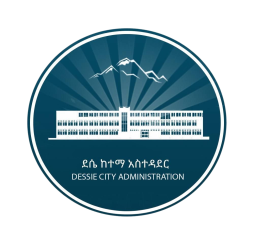History
Dessie (also spelled Dese or Dessye), aged more than a hundred and ten years old, is a multi-ethnic city in north-central Ethiopia. Located on the Addis Ababa-Mekele road in South Wollo Administrative Zone of the Amhara Region, this city has a latitude and longitude of 11' 8°N 39'38°E with an elevation of 2470 and 2550 meters above sea level. According to CSA, Dessie in 2005 occupied an estimated area of 15.08 square kilometers, which gave the city a density of 11,213.79 people per square kilometer. The majority of its inhabitants belong to the two principal religions: Ethiopian Orthodox Christianity and Islam.
The year 1882 was a turning point in the history of Dessie. Annexing the territories of his contender Abba Watew, who died in 1881, Ras Mikael emerged as the sole governor of Wollo. With the advice of Menelik, as some sources indicate, Ras Mikeal left Tenta (Were Himano) in favor of Kuru Amba (at Hara Wobelo) around Gerado area, a few kilometers from Dessie. After some time Ras Mikael came to Dessie and constructed his permanent residence or Ghibi at the northern tip of the Jemmie hill. Ras Mikael’s settlement at Jemmie, which amounted to Dessie’s foundation, was a fateful decision. In early 1900s Ras Mikael built his palace buildings as well as a large banquet hall that came down in history as Ayteyefe Addarash (‘A Hall of No Segregation’).
Ras Mikael’s selection of Ayteyefe in Dessie as a seat of his regional government, which amounted to the actual foundation of Dessie, was due partly to its strategic location. His settlement at Ayteyefe enabled Ras Mikael to defend himself and control the movement of his adversaries from a distance. More importantly, the Tossa mountain chains to the west and Azwa Gedel and Doro Mezleya to the east made Dessie a naturally defended town. The fortified location of Dessie had greatly eased Mikael’s security anxiety. The five main gateways: Titaber and Qurqurber- a thoroughfare to Tigray; Kutaber – a vital gate to Begemider; Girarambaber- a doorway to the southeast; and Bilen-Geradober – an alleyway to Shewa and Gojjam conferred the town enormous strategic advantages. Ras Mikael’s effort to extend his rule over the eastern low lands from his previous distant administrative center of Tenta proved problematic.
Besides the availability of a permanent source of water (constituting numerous springs and a perennial river, Borkena, which flows from its source near Boru towards the East traversing the northern part of Dessie), fire wood, and food crops within a radius of few kilometers, there was a major economic reason that persuaded Ras Mikael for choosing Dessie as his regional capital. Even if Dessie by then was not an important urban center, a major trade route passed through it. The route from Addis Ababa to Massawa, one of the many trade routes that crisscrossed the country, passed through Wore Ilu, Borumeda, Samale, Magala, Adwa, and finally Asmara. There was also a major trade route passing through Dessie to Tajura; hence, the need to control the trade routes and trade centers was the major factor in Mikael’s choice for Dessie. In effect, Dessie fulfilled what Ras Mikael was looking for. Thus, in the context of the late 19th c, Mikael’s resolve to come to Dessie demonstrated his farsightedness and personal wisdom.
After settling in Dessie, Ras Mikael founded the Segno Gebeya weekly market in the southern part of the town. After that many people came to Dessie and settled around the market. In addition to the settlement of Mikael's followers within a short distance from the palace complex at Ayteyefe, several merchants from Awssa, Tigray, Shewa, Gojjam, Gondar, and Yejju came to Dessie and permanently settled. As a result, not only the number of traders and inhabitants increased but also the scene of the budding town began to demonstrate tangible socio-economic changes.
The origin of the name “Dessie,” according to tradition, goes back to the early days of Emperor Tewodros II, who had made several campaigns to Wollo during his reign (1855-1868). In one of these campaigns, he is said to have camped and pitched his tent at Qetema, located between Boru and Dessie. From Qetema the Emperor moved to the Dessie area and chose Ayteyefe as his camping site. In another account, the name Dessie is related to Emperor Yohannes. Emperor Yohannes IV came to Dessie repeatedly during his reign. In one of his visits in 1883, he spent sometime on the high grounds of Dessie. Being excited by what he saw Yohannes is said to have named the place ‘Dessie,’ meaning ‘my joy.’
